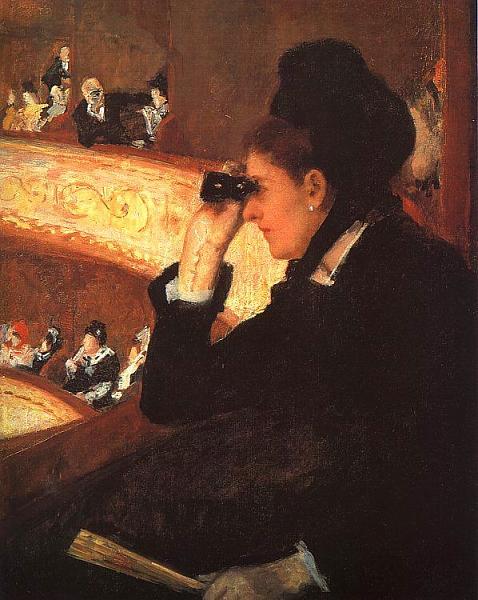During the late nineteenth century
painting was changing as an art form. With the invention of the camera artists
started to move away from trying to paint their subject with extreme detail and
accuracy. Instead they started to paint things the way they saw them in that
moment. Artists moved out of the studio and into the great outdoors focusing on
the interaction of light and color. One important subject that these
impressionist artists focused on was gender.
One important impressionist artist
who mainly focused on gender was Mary Cassatt. Born in Pennsylvania Cassatt
moved to Paris during the height of the Impressionist movement. Being in Paris at this time strongly
influenced her work not only by the techniques that she used in her paintings
but also in the subject matter of the paintings. Being a woman in a field
dominated by men, Cassatt focused her work on women in everyday life. Previous
to this most women in paintings were portrayed in the nude due to the almost
completely male audience. Cassatt however, painted women in everyday situations
so that other women could relate to them.
A perfect example of Cassatt’s
female perspective on women is shown in the painting Woman in Black at the Opera. This painting shows a woman sitting in
the balcony of an opera gazing through opera glasses at the show while a man
gazes at her from another balcony. The painting shows many of the techniques of
Impressionist painting. Cassatt’s brush strokes are clearly visible and seem to
show a great deal of motion. Woman in Black
at the Opera is seen as a contradiction to the idea of the male gaze and
the role of women at the time. The woman in the painting is dressed in black so
as to hide herself from being seen. This is because during the late nineteenth
century women were expected to stay inside the home unless accompanied by a
man. The man in the background gazing at the woman is placed in the background
to say that the idea of the male gaze is a thing of the past and woman gazing
through the opera glasses in the foreground is what the future holds.
Another artist who concentrated his
focus on gender was Thomas Eakins. Eakins, like Cassatt, was born in
Pennsylvania but, unlike Cassatt, he remained there for most of his life.
Eakins also opposed Cassatt in his focus on gender. While Cassatt focused on
women Eakins focused the American Hero.
Eakins’ painting Max Schmitt in a Single Scull is a great
example of this idea of the American Hero. In the painting Max Schmitt is shown
rowing his single scull on a river. In the background Eakins painted himself in
another scull rowing behind Schmitt. At the time rowing was becoming a popular
sport in France as well as the United States. Schmitt had recently won an
important scull race so Eakins decided to commemorate Schmitt as a champion of
the sport, an American Hero. While celebrating Schmitt’s accomplishment it also
was said to celebrate single scull rowing as a way to escape from the urban
confusion.
For more info on Max Schmitt and the history of his race click here
Eisenman, Stephen M. Nineteenth Century Art: A Critical History. 4th ed. New York, NY: Thames & Hudson, 2011. Print.


No comments:
Post a Comment